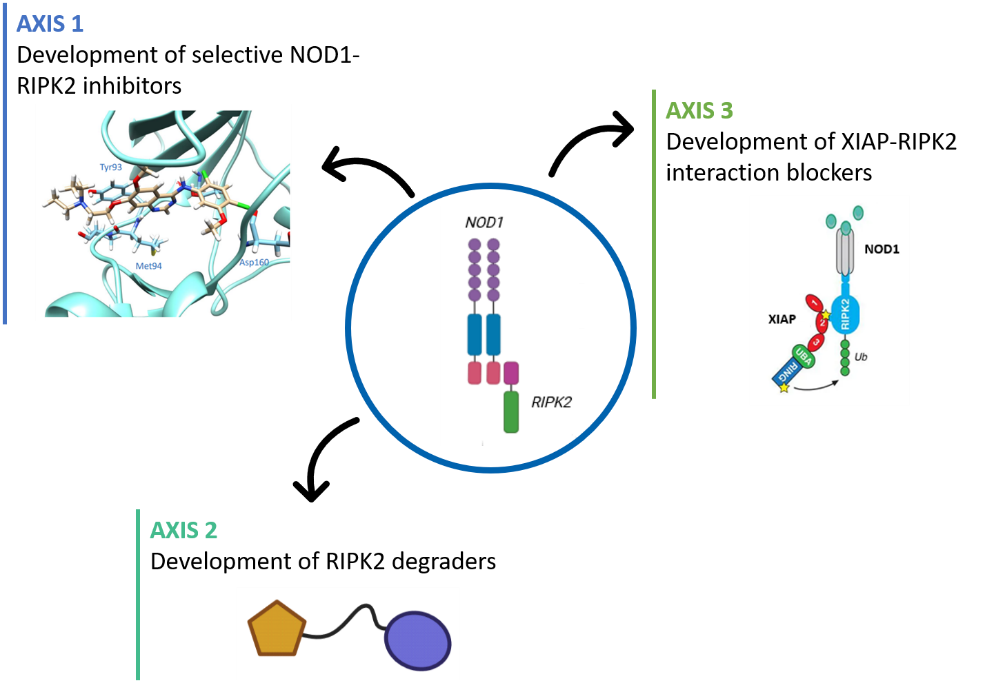Leader: Natascha Leleu
Workpackage: WP4
Inflammation is a defense mechanism with the function to restore tissue damages and to eliminate pathogens. It can be triggered by danger signals (DAMPs: Danger Associated Molecular Pattern) delivered from damaged cells or external factors. Inflammation can also be of infectious origin (ex: bacteria, virus) and then involves pathogenic signals (PAMPs: Pathogen Associated Molecular Pattern). These patterns, DAMPs and PAMPs, are recognized by immune cells present in tissues, through Pattern Recognition Receptors (PRRs). PRRs activate these cells, inducing defense mechanisms by the secretion of inflammatory mediators and the activation of cell death pathways(a). Nucleotide Oligomerization Domain (NOD) Like Receptors (NLRs) have been identified to play an important role in innate immunity responses. NOD1 and NOD2 are two of the most investigated NLR for their main role in innate immunity. They both recruit a serine/threonine kinase, Receptor Interacting serine/threonine Protein Kinase 2 (RIPK2) via a Caspase Activation and Recruitment Domain (CARD)-CARD interaction to activate the NF-κB and Mitogen-Activated Protein Kinase (MAPK) inflammatory pathways. A strategy to inhibit NOD1/2 signaling is to target RIPK2. Furthermore, RIPK2 has also been identified as an interesting target to treat Inflammatory and metabolic diseases(c). Based on this knowledge, we wish to develop RIPK2 inhibitors. As drug design strategies to target kinase are evolving, we are exploring three approaches to inhibit RIPK2.

- Development of small molecules as RIPK2 inhibitors
A screening of our chemical library led to the identification of a hit as the first RIPK2 inhibitor blocking NOD1 inflammatory pathway and not NOD2. Pharmacomodulations allowed to obtain active molecules at the nanomolar range. This project is supported by the SATT Nord de France and a series of compounds will soon be patented.
- Development of RIPK2 degraders using a hydrophobic tagging strategy HyT
This strategy aims to mimic misfolding of the protein of interest RIPK2 through hydrophobic tagging. Thus, the protein is directed to the proteasome for degradation by chaperone proteins.
- Targeting the interaction of RIPK2 with XIAP
The third strategy consists of targeting the interaction between RIPK2 and the X-Linked Inhibitor of Apoptosis Protein (XIAP). Indeed, XIAP has been identified as the main ligase responsible for RIPK2 ubiquitination, described as essential for the activation of RIPK2 inflammatory pathways. A screening, initially in silico then in vitro, of a library of Protein-Protein Interaction (PPI) inhibitors is carried out in order to identify the first inhibitors of XIAP-RIPK2.